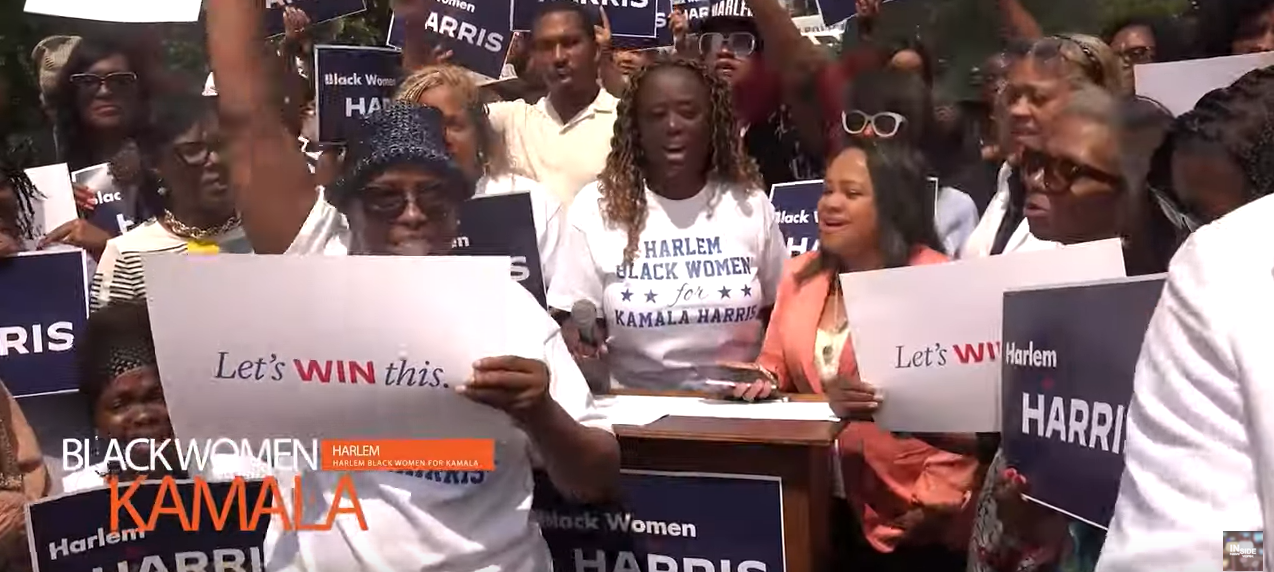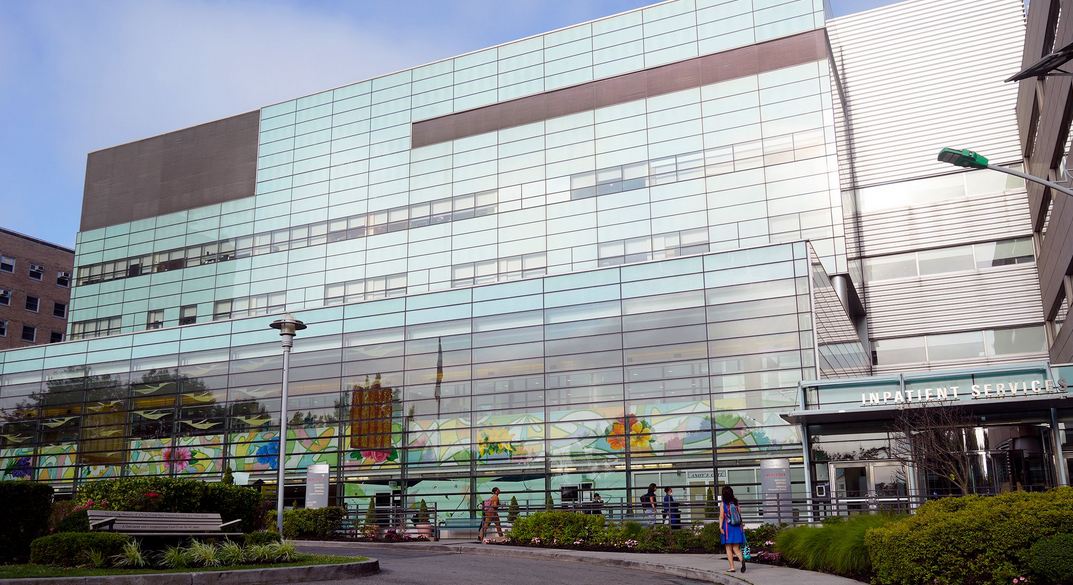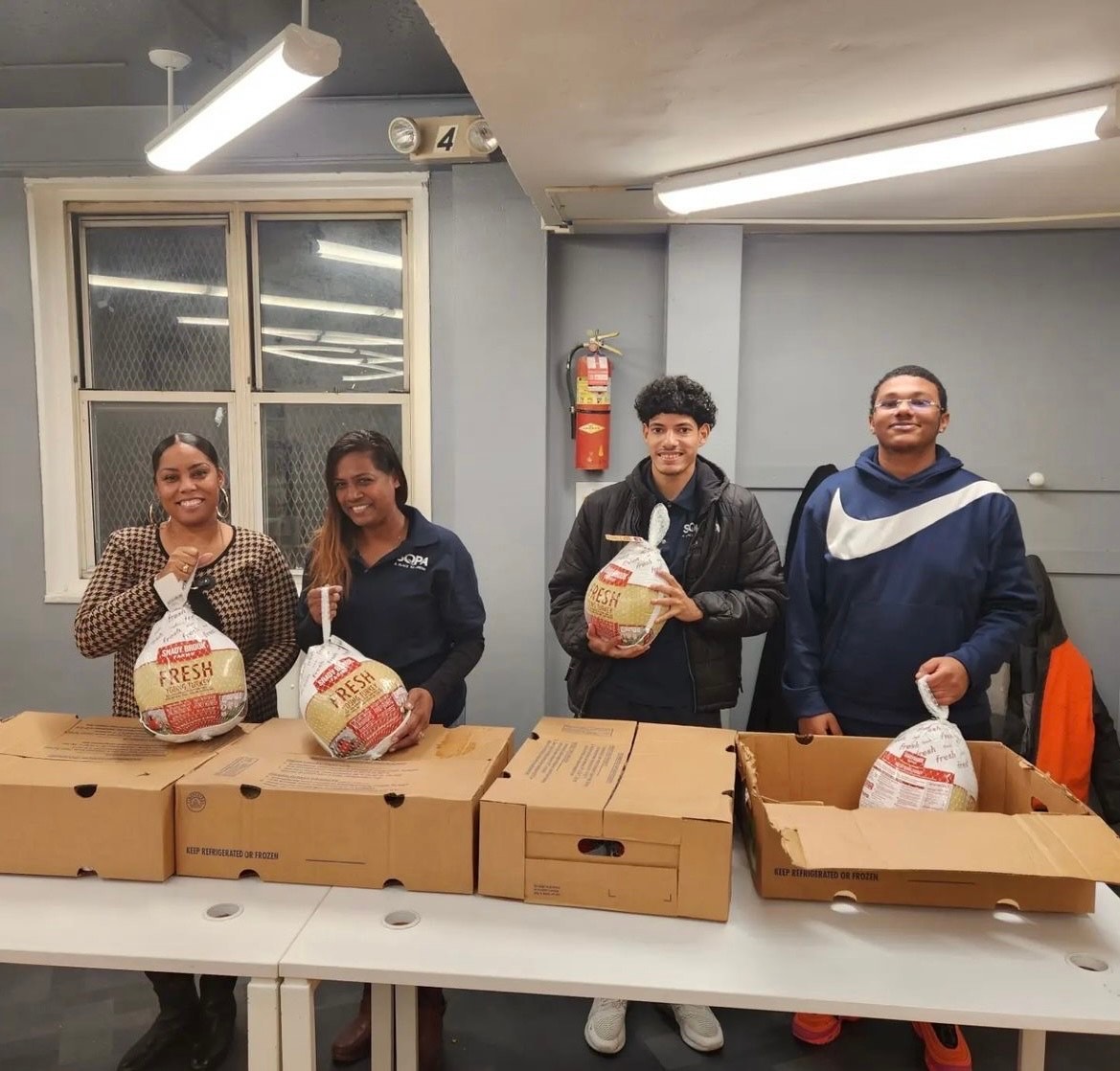Photo: Hunger Free America
The massive influx in federal spending on food and cash for low-income Americans during the pandemic has softened the blow of the hunger crisis in the city, state, and metropolitan region, according to a new report by the nonprofit group Hunger Free America, based mostly on an analysis of federal data.
The report was released in a series of events at food pantries, food benefits access offices, farmers markets, and soup kitchens in all five broughs of New York City.
Statewide in New York during the pandemic, the number of people who “didn’t have enough to eat” soared to 6.158 million in April of 2020, but dropped to about 2.715 million by September of 2021, according to U.S. Census Household Pulse data analyzed by the report.
The 56 percent drop in food insufficiency in New York State coincided with a massive boost in federal food and cash aid. From May 2020 to August 2021, federal spending on the Supplemental Nutrition Assistance Program (SNAP) – which was called the Food Stamp Program before 2009 – alone nearly doubled, from $362 million to $693 million, monthly.
“The massive, historic increase in federal food and cash benefits – delivered by President Biden and Congressional Democrats – significantly softened the blow of the hunger crisis during the pandemic,” said Joel Berg, CEO of Hunger Free America. “While millions in the New York State, New York City, and the New York Metropolitan Region suffered mightily from food hardships during the pandemic – with countless numbers forced to skip meals, reduce portion sizes, and/or buy less nutritious but less expensive food – we didn’t face an actual famine like in the developing world because the government rapidly and effectively expanded the safety net. We are extremely grateful that our federal leaders provided these extra funds and benefits, and that State and City workers toiled under very difficult circumstances to effectively enable struggling families to access them.”
Other findings of the study:
- The number of people in the NYC Metropolitan Region who couldn’t afford enough food soared to 6.219 million people May of 2020, but dropped to 3.425 million by August 2021, according to U.S. Census Household Pulse data.
- The 45 percent drop in food hardship in the New York Metropolitan Region between May 2020 and August 2021 coincided with a massive boost in federal food and cash aid. During that time, in New York City alone, federal spending on the Supplemental Nutrition Assistance Program (SNAP) – which used to be called the Food Stamp Program before 2009 – nearly doubled, from $288 million to $428 million, monthly.
- Between 2018-2020 14.0 percent of the New York City’s population – equaling 1.164 million people – suffered from food insecurity, unable to afford a sufficient supply of food, including 19.0 percent of all children, 9.0 percent of all employed adults, and 11.0 percent of all older New Yorkers. The overall number of people food insecure represented a significant jump over the 2013-2015 time period, when 12.8 percent of the New York City’s population – equaling 1.094 million people – were food insecure.
- Citywide in New York, 84 percent of food pantries and soup kitchens who responded to a Hunger Free America survey reported that they served more people in 2021 than 2020.
- The Bronx remains New York City’s hungriest borough in every category, with, in 2018 – 2020, more than one in four Bronx residents (25.4 percent) experiencing food insecurity. This includes 35.8 percent of all children, nearly 18 percent of working adults, and more than 21 percent of older residents (60+).
- Between 2018-2020, 11.3 percent of the New York State’s population – equaling 2.179 million people – suffered from food insecurity, including 16.0 percent of all children, 7.9 percent of all employed adults, and 7.2 percent of all older residents. That overall number of people food insecure represented an increase over the 2013-2015 period, when 11.1 percent of the New York State’s population – equaling 2.166 million people – were food insecure.
- The Utica-Rome Metropolitan Region has the state’s highest metropolitan level of food insecurity in 2018-2020, 19.4 percent, followed by the Syracuse region at 14.5 percent, and the Albany-Schenectady-Troy region at 14.3%
The report includes detailed public policy recommendations at the federal, state, and city levels, including calling for the rapid passage by the U.S. Senate of the Build Back Better Bill, just passed by the U.S House, because it continues and expands the government pandemic social safety net.
Hunger Free America CEO Berg said, “hungry Americans urgently need the U.S. Senate to pass the Build Back Better Bill, to not only prevent a relapse into the worst of the pandemic, but to also slash child poverty and hunger in the long-run. The bill is an important down payment on the broader economic and governmental steps we need to take in the future to finally end domestic hunger and ensure access to affordable, nutritious food for all Americans.”
The full report, “Surging Pandemic Hunger Stemmed by Government Safety Net Boost,” is available on Hunger Free America’s website: www.hungerfreeamerica.org








